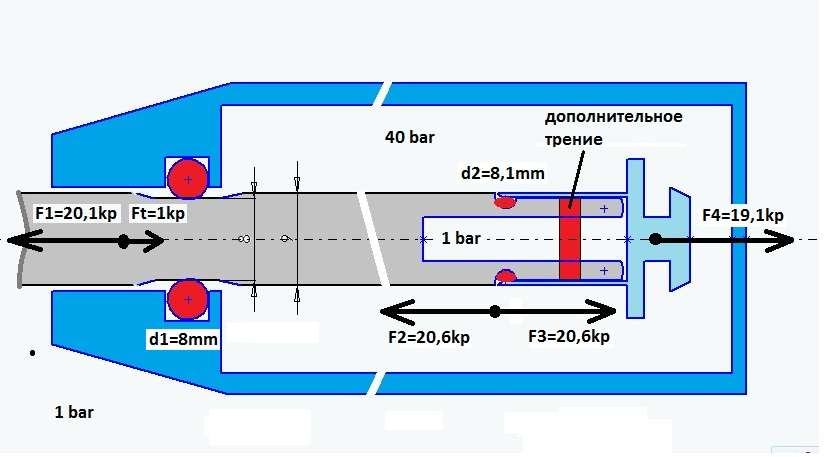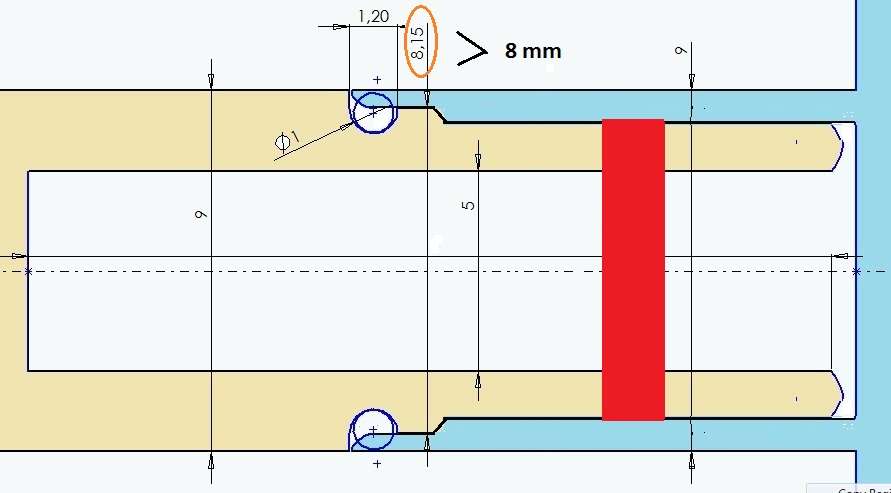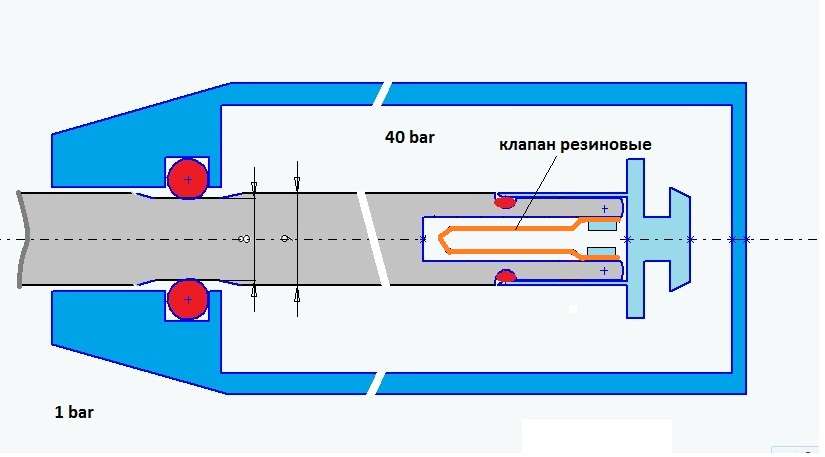This is an idea of a Vlanikgun like speargun design. His design was the first I've seen. Maybe there are other similar designs too. Here is a slightly different solutions to Vladimirs design. Just to put something new on a forum.  I suppose it might work, at least theoretically on a paper! The shaft is 9 mm with thinner front segment of 8 mm. I do not like this 8 mm part but I had not better solution. The most critical part of the design is reliable permanent sealing on the rear part of the shaft.
I suppose it might work, at least theoretically on a paper! The shaft is 9 mm with thinner front segment of 8 mm. I do not like this 8 mm part but I had not better solution. The most critical part of the design is reliable permanent sealing on the rear part of the shaft.









